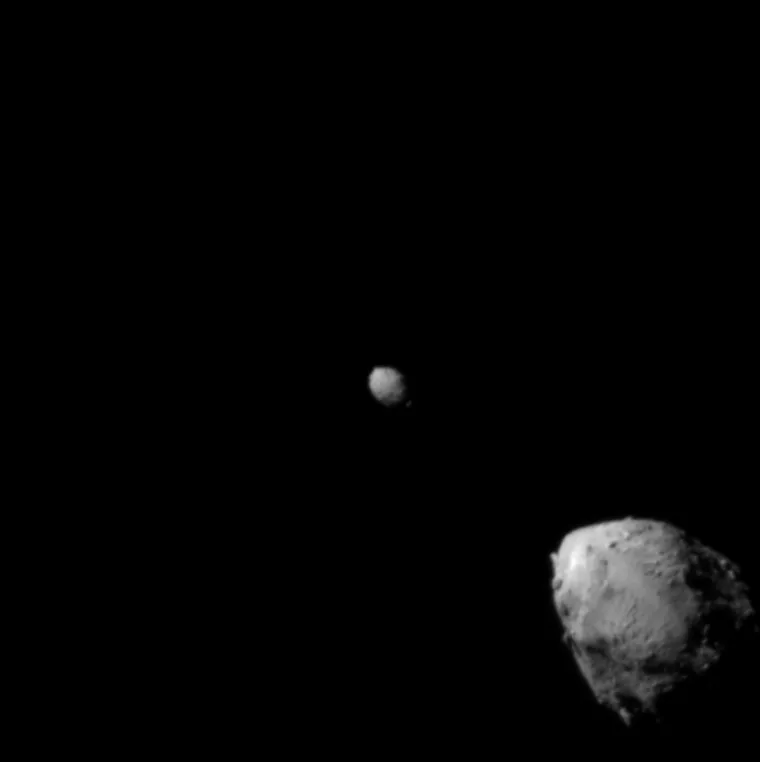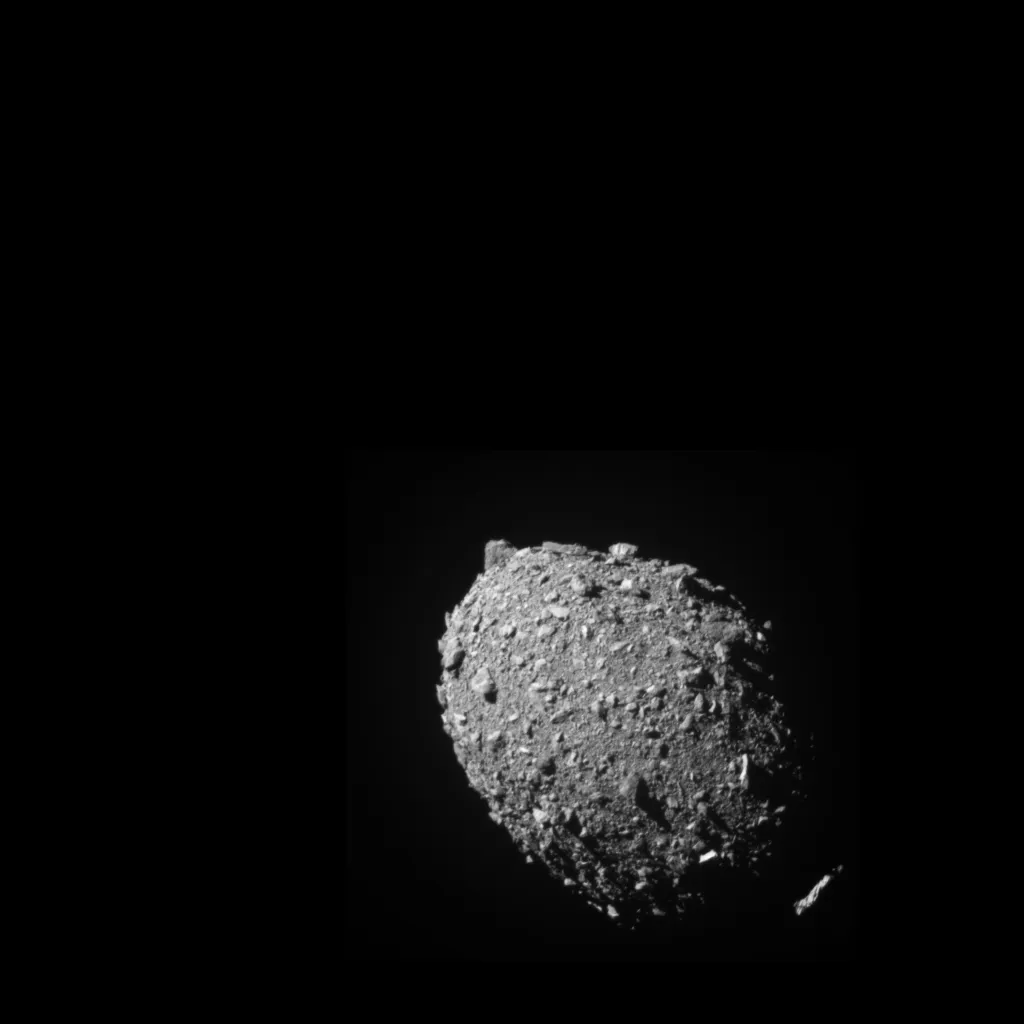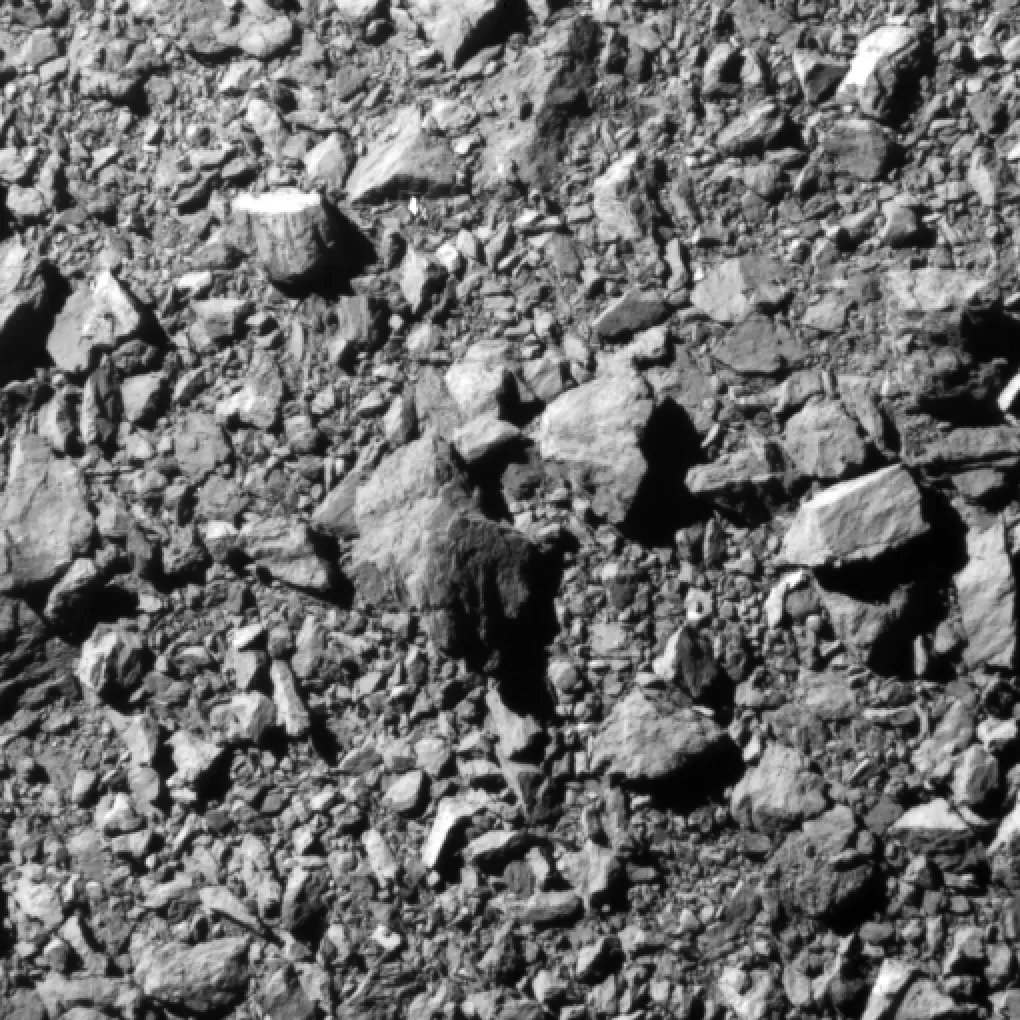NASA’s DART mission - Double Asteroid Redirection Test - has successfully impacted its target asteroid.
The successful impact took place at 23:14 UTC on 26 September, scientists at the Johns Hopkins Applied Physics Laboratory (APL) in Laurel, Maryland, announced.
The DART mission was live streamed online so that viewers all around the world could watch the final moments as the spacecraft approached its target.
The DART mission is a strand of NASA’s defence strategy, its purpose to see whether the course of an asteroid or comet could be deflected, should it be heading towards Earth.
This marks the first time an asteroid has been deflected through impact by a spacecraft.
The target asteroid was actually an asteroid moonlet called Dimorphos measuring 160m in diameter.
Dimophus orbits a 780m asteroid called Didymos.
Following the successful impact, the DART mission team will now observe Dimorphus using ground-based telescopes to measure how much DART has altered its orbit.
It's thought that DART will have shortened Dimorphism's orbit by about 1%, which would amount to a difference of around 10 minutes, but more analysis will be carried out to confirm this.

Images have been released by the DART science team, captured by the spacecraft's Didymos Reconnaissance and Asteroid Camera for Optical navigation (DRACO), and showing the final moments before DART crashed into its target.
Together with a guidance, navigation and control system that works in tandem with the spacecraft's Small-body Maneuvering Autonomous Real Time Navigation (SMART Nav) algorithms, these systems enabled the DART spacecraft to distinguish between the asteroid and its moonlet, and target the smaller of the two.

The 570kg DART spacecraft was guided by these systems through the last 90,000km of its journey to crash into the moonlet at about 22,530km per hour.
The European Space Agency's Hera project will observe both Dimorphos and Didymos to analyse the effects of the collision; specifically studying the resulting crater and measuring the moonlet's mass.
"At its core, DART represents an unprecedented success for planetary defence, but it is also a mission of unity with a real benefit for all humanity," says NASA Administrator Bill Nelson.
"As NASA studies the cosmos and our home planet, we’re also working to protect that home, and this international collaboration turned science fiction into science fact, demonstrating one way to protect Earth."

"This first-of-its-kind mission required incredible preparation and precision, and the team exceeded expectations on all counts," says APL Director Ralph Semmel.
"Beyond the truly exciting success of the technology demonstration, capabilities based on DART could one day be used to change the course of an asteroid to protect our planet and preserve life on Earth as we know it."
"What a remarkable day for humanity," said APL Space Exploration Sector Head Bobby Braun.
"The team nailed it — and I couldn’t be more proud of their efforts. Data from this test will inform future planetary defense efforts. Today is a milestone in demonstrating just how far our nation’s space program has come, and how important it is to all of us here on Earth."
Find out more at the DART mission webpage.

